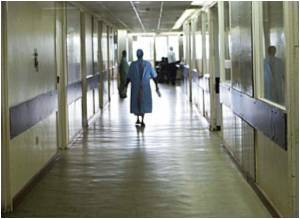
The CC5 strain of MRSA has managed to acquire resistance to vancomycin on 12 separate occasions, and although it hasn't spread widely yet, the risk that MRSA could eventually overwhelm even our last-line drugs is a very serious one. In the study, the researchers sequenced the genomes of all available vancomycin-resistant MRSA strains to find what distinguishes them from other lineages and why CC5 is apparently more adept than other strains at picking up vancomycin resistance.
They report that vancomycin-resistant MRSA strains and other CC5 lineages have some important differences from other types of MRSA, including adaptations that allow them to co-exist with other types of bacteria and may help them take up foreign DNA. They all lack the operon called bsa, for instance, a set of genes that encode a lantibiotic bacteriocin, an antibiotic protein made by bacteria to kill other bacteria. This is important, say the authors, because it enables CC5 to get along well with other bacteria in mixed infections. Instead of killing off competing organisms, CC5 aims to co-exist. This enables it to pick up genes - like the one that encodes vancomycin resistance - from unexpected places. Mixed infections are breeding grounds for antibiotic resistance because they encourage the exchange of genes among very different kinds of organisms.
In roughly the place where these bacteriocin genes are missing is a unique cluster of genes that encode enterotoxins, proteins that attack the human host and, again, could make it easier for mixed populations of bacteria to grow at infection sites.
Finally, CC5 has a mutation in a gene called dprA, which is known to influence the ability to assimilate foreign DNA. The mutation could alter or eliminate the function of dprA in CC5 strains of MRSA, making it amenable to taking up DNA from outside sources.
The sum of all these traits, including the lack of bacteriocin production, the ability to produce enterotoxins, and mutations in the ability to assimilate foreign DNA, is a lineage of S. aureus that is optimized to grow in exactly the types of multi-species infections where gene transfer could occur.
Advertisement
Source-Eurekalert











